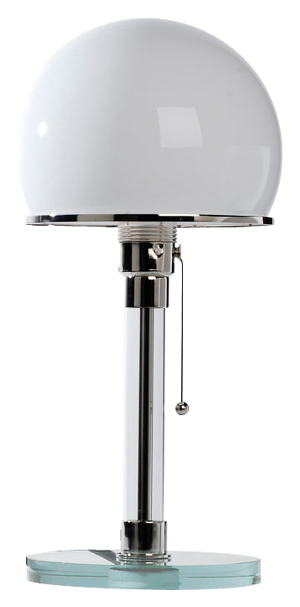![Erich Borchert, untitled [two women and a man], photograph of a lost wax crayon drawing , c.1927, Bauhaus-Archiv Berlin Erich Borchert, untitled [two women and a man], photograph of a lost wax crayon drawing , c.1927, Bauhaus-Archiv Berlin](/images/Erich-Borchert_Zwei- Frauen-und-ein-Mann_83364.jpg?w=950&h=450&c=0)
Erich Borchert, untitled [two women and a man], c.1927
Erich Borchert, untitled [two women and a man], photograph of a lost wax crayon drawing , c.1927, Bauhaus-Archiv Berlin
Erich Borchert
Erich Borchert was born in Erfurt and he attended the Bauhaus from 1926 to 1930, completing his degree in architecture. He stood out on account of his diverse tasks and activities in the wall-painting workshop, which was headed by Hinnerk Scheper, and his experimental works in the areas of painting and the graphic arts. As early as 1928 he had already initiated the exhibition Junge Bauhausmaler (Young Bauhaus painters) together with several fellow students, including Xanti Schawinsky, Fritz Kuhr and Lou Scheper: the exhibition was shown at important artists associations all across Germany and promised a successful beginning for participants’ careers on the art market. However, Borchert’s aims went beyond that: his strong interest in social issues manifested itself in his active dedication in the Communist Student Faction at the Bauhaus. Accordingly he seized the opportunity to contribute to the construction of a socialist society by following Hinnerk Scheper to Moscow in 1930. His teacher at the Bauhaus had received a commission there to carry out the colour design of Soviet communal and residential buildings. When a disillusioned Scheper returned to Germany in 1931, Borchert took over his post at the Malyarstroy Trust. Together with his wife, the painter Sofia Matveyeva of Moscow’s Vkhutein, he developed numerous colour schemes for the communal buildings in and around the capital. Beginning in 1931 he also created caricatures condemning the looming dictatorship of Hitler. The paintings and drawings that Borchert created in Russia, most of which deal with German subjects, received recognition in the form of a 1933 solo exhibition at the Museum of New Western Art in Moscow. From 1939 he was forced to support his family as an independent fine-art painter and draughtsman, which proved difficult in the face of the fact that his caricatures had been rejected and labelled “foreign” by Soviet censors. He was long denied Soviet citizenship; only in late 1938 did authorities approve his application. At Christmas time in 1941 Borchert was nonetheless deported to a construction battalion in the Urals as an enemy alien and, in November of 1942, he was accused of committing a ‘Fascist diversionary act’ in Kamensk-Uralsky. He was sentenced to death at his original trial, but this was commuted to 20 years in a “corrective labour camp” in early 1944. However, Borchert died before the year was out, as a result of the conditions at the Kazakh Karlag camp.
In his oeuvre, Erich Borchert developed a broad palette of artistic works ranging from his early landscape studies from the area around Erfurt to experimental drawings and commissioned works for the wall-painting workshop at the Bauhaus to watercolours and drawings featuring motifs from his private surroundings and anti-Fascist caricatures.
Borchert provides a prime example of Germany’s so-called lost generation, whose continued pursuit of their artistic work was hindered by the rise of Nazism in Germany. Some of them set out for the Soviet Union, full of youthful expectations and utopian goals: they were welcomed there with open arms and numerous commissions, but their situation became increasingly desperate and then, during the Stalinist purges, they were either shot or – like Borchert – died in labour camps. In the process, not only their biographies but also their work as artists fell into almost complete oblivion. We were thus all the more delighted when Borchert’s daughter Erika and the Koltschenko family generously donated photographs of the mostly lost works from his early oeuvre, enabling us to publicly present the testament to his work provided by the selection here.
